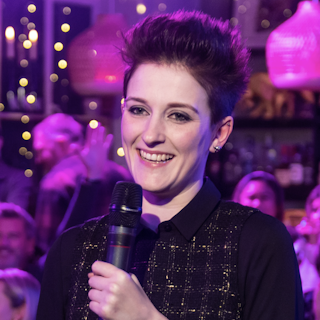Brands need to focus on measuring attention, says Parsec CEO
The Drum Digital Trading Awards USA 2018, has introduced a new category, Best Creative Optimization, created by sponsor Parsec. This is for agencies whose creative optimizations increased engagement related metrics throughout the flight of a campaign.
The digital trading industry is in constant flux, not a day goes by when someone isn’t talking about brand safety, transparency or trust. But what about the creative behind the tech? It’s not all about numbers and statistics. The two certainly can work together to provide more insightful and successful campaigns across the industry.
We speak to Parsec CEO Marc Guldimann on how dynamic creative optimization needs a bit of a push, what brands be optimizing towards, what the future looks like and how creativity isn’t only about making beautiful ads.
Dynamic creative optimisation (DCO) has been around for a while, why hasn’t it taken off?
The question facing most brands is, “what good is dynamic anything without a meaningful metric to optimize towards?” Direct response advertisers have been able to tune creative and media towards clicks and post-click actions and have done so with great success.
However, the same can’t be said for brands, who have been left without a reasonable way to judge the success of optimizing creative. This lack of clear goals, coupled with the siloing of media and creative (something you don’t see in DR platforms like Criteo), has slowed DCOs adoption by brands.
What should brands be optimizing towards?
Branding is fundamentally about capturing attention, layering a message on it, with the goal of impacting perception and opinion. Unfortunately measuring brand impact through surveys is expensive, error-prone, fraught with biases and slow--insights can take longer than the campaigns themselves—all factors which would seem to make it a poor candidate for optimization.
The good news is that research conducted by Parsec and others, including Microsoft (see Goldstein et al 2014), has proven a consistent connection between attention and brand impact. It makes sense, especially in opt-in experiences, that the more time that someone spends with an ad, the more likely they will be aligned with the goal of the advertiser.
New products, like Google’s TruView and Parsec, measure how much time people choose to spend with advertising—making it possible to optimize towards more attentive creative and environments. This is where brands should focus: measuring attention and optimizing to more of it.
There are many levels of DCO, how much customization do brands need?
A balance needs to be struck between optionality and creative that stays within brand guidelines. The dynamic elements of brand creative should be fairly limited; I’d rather have a brand design 30 different creatives and dynamically match them with the media strategies that capture the most attention.
One interesting side-effect of measuring how much time someone has chosen to spend with advertising is the opportunity to customize subsequent sessions. Sequencing and personalization are probably more impactful for brands than a system that can mix-and-match hundreds of product shots, CTAs, and background colors.
As machine learning tools are fed with more data, there will be a broader spectrum of creative optimizations available. What will the future look like?
Hopefully, the future will be simpler, with fewer ad formats and more meaningful metrics. Machine learning should be focused on presenting people with relevant, high-quality creative.
Today brand advertisers typically employ siloed tools for media and creative optimization. In the future these functions could be performed by the same system. This combination, along with easily measured metrics, is a major reason why DCO for direct response advertising is so effective.
You could argue when everyone optimizes for everything, it is no longer a competitive advantage. The only true competitive advantage will always be creativity. What do you think?
Yes, except creativity isn’t only about making beautiful ads, it’s just as important to take novel approaches to selecting metrics and designing optimization strategies. Creative thinking in those areas will likely increase the performance that brands realize from dynamic tools, no matter how commonplace optimization becomes.
Parsec are a sponsor of The Drum Digital Trading Awards. The deadline has been and gone but you can still enter by applying for an extension. Please contact Courtney Johnson for more details.


